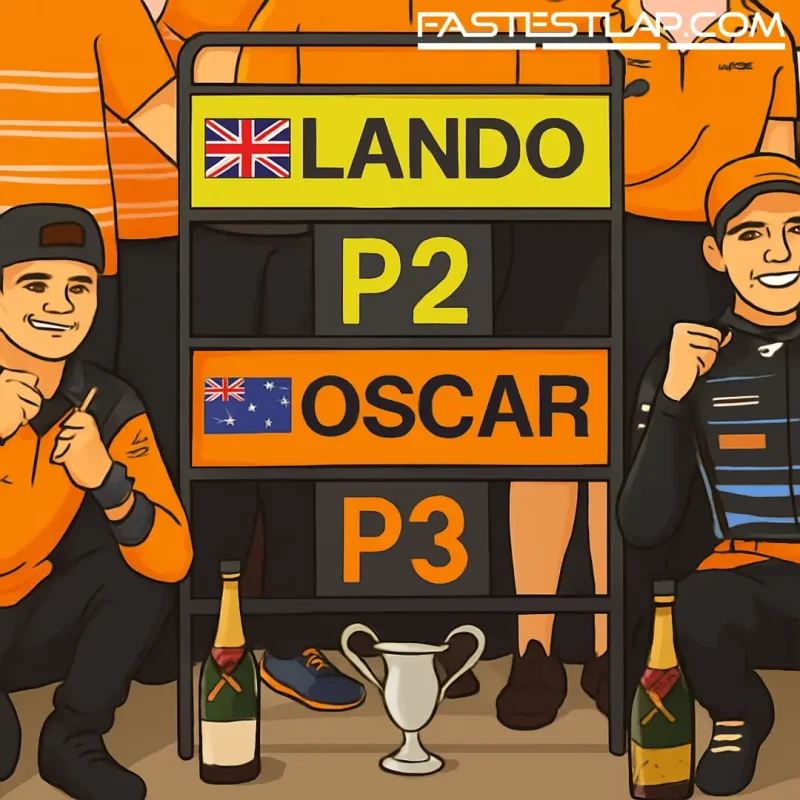McLaren’s Monza swap: Stella says it wasn’t about favoritism, it was about the “papaya rules”
Monza delivered a neat little case study in why McLaren’s house rules matter. A slow pit stop for Lando Norris briefly flipped him behind Oscar Piastri late on, and the team told the championship leader to hand the place back. Cue a tetchy radio reply from Piastri, a clean swap on track, and a calm debrief from Andrea Stella that sounded a lot like: this is how we do things.
The call came after McLaren split their late-stop sequence. Piastri was brought in first to keep Charles Leclerc at bay; Norris was kept out a lap longer while the pit wall waited for any whiff of a safety car or red flag. The stated intention, Stella said, was never to invert the order. Only when Norris suffered a sluggish stop did the running order flip—and that’s where the “papaya rules” kicked in.
“I think that the pit stop situation is not only a matter of fairness, it’s a matter of consistency with our principles,” the team principal explained post-race. “However the championship goes, what’s important is that the championship runs within the principles and the racing values that we have at McLaren, and that we have created together with our drivers.”
Piastri, leading the Drivers’ standings, didn’t love it in the moment. “We said that a slow pit stop was part of racing,” he told race engineer Tom Stallard as the order came through. “So I don’t really get what’s changed here, but if you really want me to do it, then I’ll do it.” He did, and Norris cleared off again, nibbling three points out of his team-mate’s lead.
Stella’s rationale was blunt: the team played the percentages, and the percentages shouldn’t change who’s ahead on merit when both cars are in the same race window.
“We wanted to sequence the pit stop of the two cars by stopping Oscar first and then Lando,” he said. “We had the clear intent that this should not lead to a swap of position. It was just done because we were covering Leclerc, and at the same time, we were waiting until the last possible moment to see if there had been a red flag or a safety car.
“So we pursued the team interest, and to capitalise as much as possible on this interest, we needed to go first with Oscar, then with Lando. But, clear intent was, this is not going to deliver a swap of positions. The fact that we went first with Oscar, compounded by the slow pit stop of Lando, then led to a swap of positions, and we thought it was absolutely the right thing to go back to the situation pre-existing at the pit stop—and then let the guys race.”
In other words: protect track position with the lead car, don’t punish the driver who had the race under control before a procedural delay, and keep both drivers free to fight once you’ve restored the baseline. It’s the same through-line McLaren introduced last year with their internal “papaya rules,” designed to remove ambiguity when strategy or circumstance scrambles things.
Stella also bristled at the idea that a “review” of the incident means the rulebook’s about to get shredded. “Reviewing is the foundation of pursuing excellence,” he said. “If you think that whatever you do is good and you are not going to review… simply, you are not going to progress. The fact that I use this word doesn’t mean that there will be changes. Potentially, we will review [processes], and we will further align on them, and we will confirm them.”
There’s a bigger picture here, and McLaren knows it. Piastri and Norris are locked in a title fight, with Max Verstappen still a constant reference point on Sundays. They didn’t have the pace to touch him at Monza, but they did have a clear internal framework when the margins got tight. That’s the difference between a messy radio day and a controlled one, especially as the pressure ratchets up.
And while Piastri’s irritation was perfectly human—no competitive driver likes yielding track position—he followed the order and got on with it. That matters just as much as the policy. The trust between pit wall and cockpit is what keeps a two-car title push from chewing itself up.
McLaren will pick through the wheel-gun data and the pit choreography, as they always do. Maybe they shave a tenth off the next stop; maybe they simply agree the guidelines worked as intended. Either way, the headline from Monza wasn’t that team orders decided the race. It’s that McLaren’s principles decided how they went racing—and both of their drivers knew where the line was.




